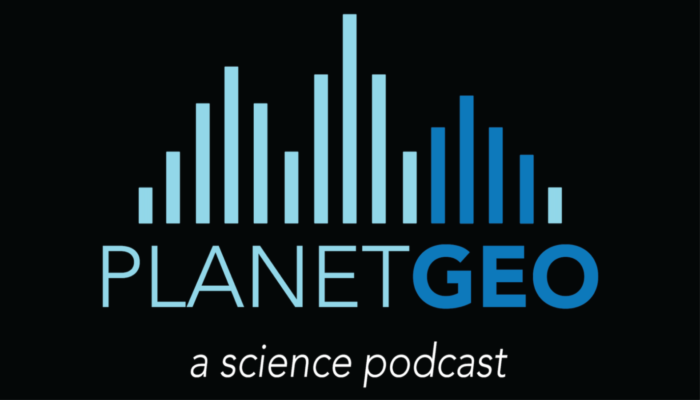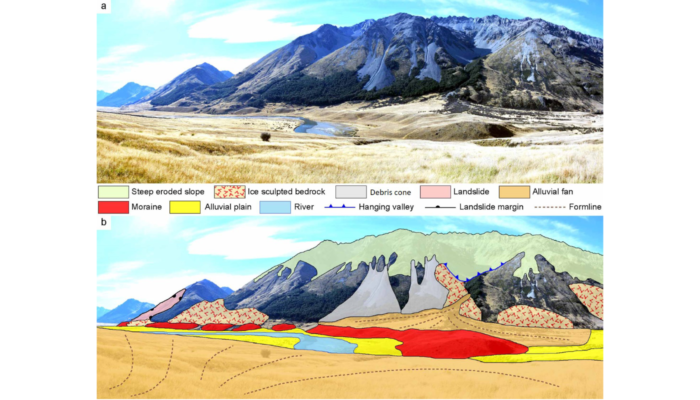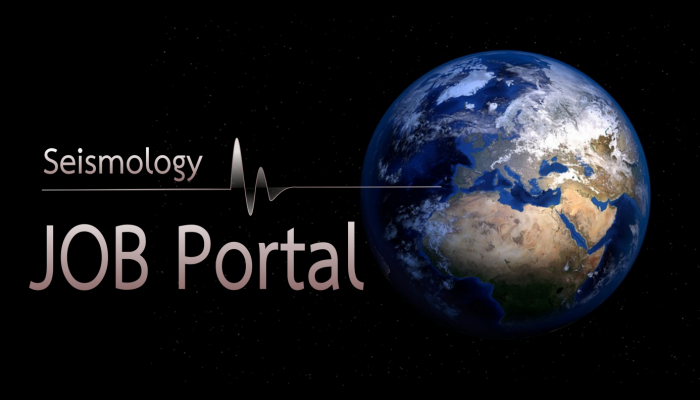Many geoscientists have a distinct moment when they fell in love with the discipline. Jesse Reimink and Chris Bolhuis are no exception; they both have very clear moments in their lives when they knew that studying the Earth was the path for them. For Jesse, Chris actually was that moment. Chris Bolhuis has been teaching high school students the basics of geoscience for nearly three decades and ...[Read More]
Geomorphology
The new glacial geomorphological map from New Zealand
Glacial geomorphological mapping comparison in 3D. a – Moraine ridge in the middle section of the Ahuriri River valley with surrounding area. b – Key landscape elements are shown in the accompanying sketch. (Credit: Tielidze et al., 2021). Geomorphological maps are a fundamental tool to represent landforms and understand how different morphological elements and agents shaped a natural ...[Read More]
Seismology
Seismology Job Portal
On this page, we regularly update open positions in Seismology for early career scientists. Do you have a job on offer? Contact us at ecs-sm@egu.eu Please, note that other available research positions are displayed on the EGU Jobs Portal. Special Thanks to Eric Löberich for researching job postings for the ECS.
Tectonics and Structural Geology
TS Must-Read – Lister and Snoke (1984) S-C Mylonites
Following the impact of the global plate kinematics revolution, researchers in the 70s and 80s made significant efforts to compare records of deformed rocks in outcrops to large-scale deformation and kinematics. By publishing “S-C Mylonites” 1984, Gordon A. Lister and Arthur W. Snoke gave a step forward for the TS community. The paper contributed to transitioning from a strain-dominated framework ...[Read More]
Cryospheric Sciences
Do meditation and a better science correlate? – Mindfulness in Academia
We often start searching for the term “mental health” online only when mental issues are already arising. It seems to be a trendy word on everyone’s social media. Of course, you don’t have to suffer already in order to learn about, and benefit from, mindfulness – or the ability to notice the present moment and what is going on in your life. In this post, I am sharing how I became a more mindful sc ...[Read More]
Geodynamics
The Sassy Scientist – Grounded
“Everyone else is going. It’s so unfair. They just don’t understand. Everyone else’s supervisor said yes.” Denis has been sent to his scientific bedroom and he isn’t impressed. He contacted the Sassy Scientist via Tiktok to ask: My supervisor has banned me from going to conferences. What shall I do? Dear Denis, You supervisor is a mean, heartless seg-fault who w ...[Read More]
Tectonics and Structural Geology
Josefa Cuevas de Sansores (24-02-1920 – 2010) – Mexico’s first woman geological engineer
Josefa Cuevas Sansores was born on the 24th of March, 1920 to Andrea Aguilar Argüello. Andrea was a professor herself and graduated in 1929 specializing in ‘Instrucción Primaria Inferior y Superior’. She used the knowledge she had gained during her studies to found several kindergartens in Yucatán, one still carrying her name). Josefa had three older sisters, two of which became school teachers, w ...[Read More]
Geochemistry, Mineralogy, Petrology & Volcanology
The *real* mineral cup: wavellite vs. kernowite / devon versus cornwall
Kernowite: In November 2020, approximately two major world events occurred. Firstly, Joseph R. Biden Jr. and his dog Major were elected as the 46th president and president’s dog of the United States of America. Secondly, the International Mineralogical Association approved a new mineral, kernowite, Cu2Fe3+(AsO4)(OH)4⋅4H2O, which was described by M. Rumsey from the Natural History Museum in L ...[Read More]
Seismology
Join the Seismology EGU Slack group!
Less than a month to go to until EGU. Are you getting nervous about your blank poster draft? Is there a glimmer in your eyes thinking about the upcoming vEGU and do you have the urgent need to share it with somebody? Are you worried about whether you should use a .pptx, .odt or .pdf for your presentation? Do feel overwhelmed about the numerous sessions, talks, posters and activities? Are you unsu ...[Read More]
Climate: Past, Present & Future
Reconstructing ice sheets and topography of the past
One of the most profound consequences of past climate changes are the geologically rapid (<100,000 year) changes in global topography. For thousands of years, large ice sheets, similar to what currently exists in Greenland and Antarctica, waxed and waned on North America and Europe. Only 20,000 years ago, if you were sitting in the middle of Canada or Sweden, you would be under thousands ...[Read More]










